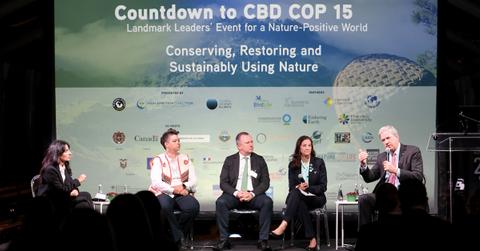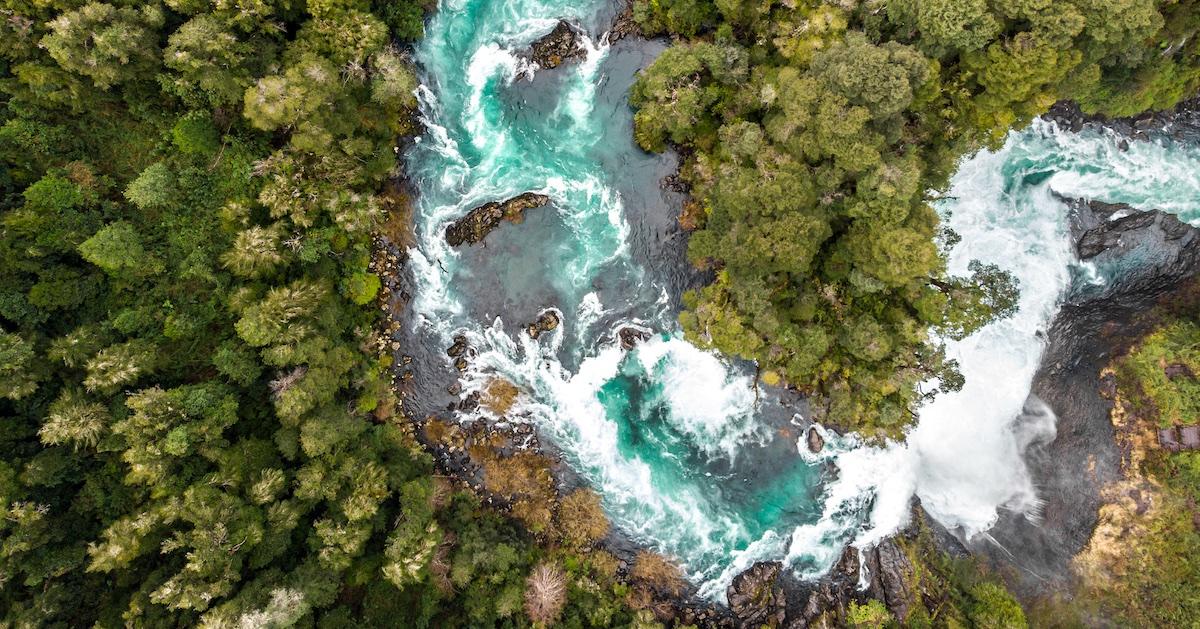At the COP15 Biodiversity Summit, Leaders Sign 30x30 Deal to Protect Nature — and Ourselves
Updated Dec. 20 2022, 12:04 p.m. ET

After nearly two weeks of meetings, the UN’s annual biodiversity conference, COP15, came to a close on Dec. 19, 2022. And at the end of the conference, parties from all across the world agreed to the Kunming-Montreal Global Biodiversity Framework, which sets various targets for improving humanity’s relationship with nature, which should therefore improving biodiversity — and life on Earth for us humans.
A key part of the framework is the 30 by 30 deal, aka 30x30, which sets tangible goals to achieve by the year 2030.
Keep reading for all the details on this new agreement, and what it means for biodiversity.

An aerial view of Huilo Huilo river in southern Chile.
The Kunming-Montreal Global Biodiversity Framework sets new goals for biodiversity and conservation.
COP15 was originally scheduled to take place in Kunming, China, but was postponed several times due to the COVID-19 pandemic. So even though the summit wound up being held in Montreal, Canada, from Dec. 7 through Dec. 19, 2022, Kunming was still recognized as a president of the conference — hence its major agreement’s name, the Kunming-Montreal Global Biodiversity Framework.
As explained by Reuters, the framework is an agreement that dictates what conservation efforts should be made over the next eight years to support biodiversity. It commits the developed countries who are parties to the agreement to spend a total $200 billion each year on biodiversity initiatives.
The Kunming-Montreal Global Biodiversity Framework has four central goals, quantified by 23 targets, which its signatories are committing to achieving by 2030. As per the UN’s Convention on Biological Diversity’s website, the four broad goals are:
- Goal A: Maintain natural ecosystems around the world by 2050; stop the human-caused extinction of known threatened species, with a goal of reduce extinction rates; and maintain the genetic diversity of various wild and domesticated species.
- Goal B: Maintain, enhance, and restore biodiversity, in aim of achieving the UN’s sustainable development goals.
- Goal C: Fairly and equitably distribute the benefits (monetary and otherwise) from using genetic resources, especially in regards to Indigenous peoples.
- Goal D: Actually implementing all of the tools needed to accomplish the Kunming-Montreal global biodiversity framework, with a focus on giving equitable access to developing countries.
Then, the 23 targets include more quantifiable markers for implementing these goals and protecting biodiversity. For instance, Target 5 aims to make the wild species trade more sustainable and safe, in an aim of avoiding overexploitation and ecological damage, and making sure to respect Indigenous peoples; Target 18 states that by 2025, the parties must identify and eliminate (or reform) government subsidies and other incentives that harm biodiversity; and Target 23 makes sure that gender equality is considered in the execution of the framework.
“The adoption of this Framework and the associated package of ambitious targets, goals and financing represents but a first step in resetting our relationship with the natural world,” stated Inger Andersen, Executive Director of the United Nations Environment Programme.
“For far too long humanity has paved over, fragmented, over-extracted and destroyed the natural world on which we all depend. Now is our chance to shore up and strengthen the web of life, so it can carry the full weight of generations to come,” Andersen continued. She added that actions humans take to protect nature are so much more than that; they also help reduce poverty, achieve the UN’s sustainable development goals, and enhance human health.
The Kunming-Montreal Global Biodiversity Framework is replacing the Aichi Biodiversity Targets, which were set in Aichi Prefecture, Japan in 2010. There were 20 targets in total, all of which aimed to help the planet reduce biodiversity loss through 2020. However, this agreement was not very successful — not one of the Aichi Biodiversity Targets was actually accomplished, according to Reuters.
30 by 30, aka 30x30, is an important part of the Kunming-Montreal Global Biodiversity Framework.
A key component of the Kunming-Montreal Global Biodiversity Framework is the 30x30 conservation plan. As per the Convention on Biological Diversity, the plan sets a few goals by the year 2030, the central ones being to:
- Protect 30 percent of Earth’s lands, oceans, coastal areas, and inland waters
- Reduce harmful government subsidies by $500 billion every year
- Reduce global food waste by 50 percent.
Because the 2010’s Aichi Biodiversity Targets were largely unsuccessful, it’s fair to be concerned that Kunming-Montreal Global Biodiversity Framework will not actually achieve all it sets out to. But hopefully, as climate change keeps worsening, more and more of the powerful people who are responsible for accomplishing the new framework’s goals will step up to the plate.